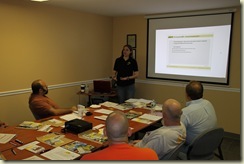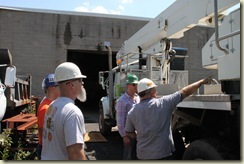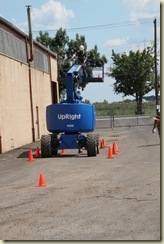On August 17, the Institute held an AWPT operator’s course for categories (1b) and (3b) at our facility. We had 6 students from all over the country in attendance, with each student successfully receiving a PAL card.
Our morning session, a classroom lecture that covers all aspects of regulations, potential hazards, types of equipment, and other important topics.
Here you see one of our trainers instructing students on the proper technique for a pre-start inspection on a category 1b machine.
Here is a student navigating the challenge course for category 3b operators. Operators must avoid the cones and successfully complete a task after doing a workplace inspection and pre-start inspection to demonstrate their competence in the category.
We had a great day and we congratulate these students on their success.





